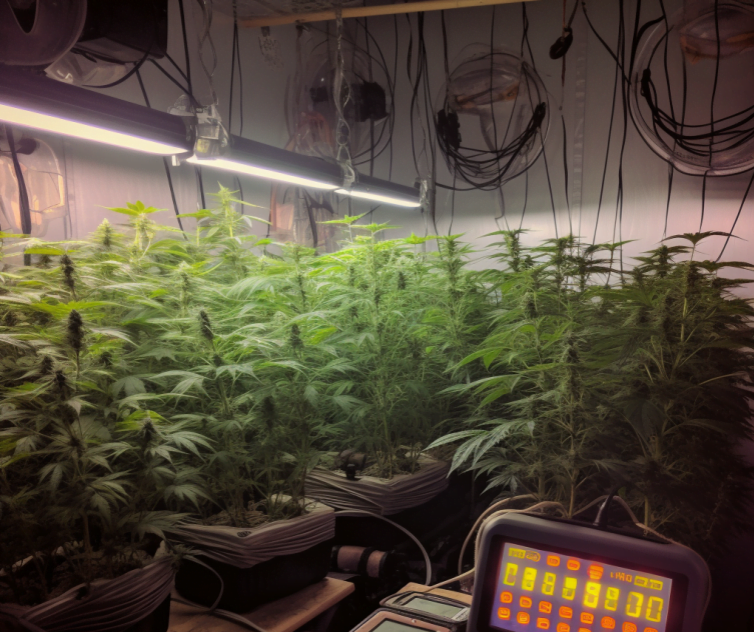English
Electrical conductivity (EC) values are an important measurement to monitor during cannabis cultivation. EC measures the ability of a solution to conduct an electric current and is used to determine the concentration of dissolved salts in a nutrient solution. This measurement is crucial for ensuring that the cannabis plants receive the appropriate amount of nutrients throughout their growth cycle. You can only measure EC with special EC meters and adjust it with acids or alkalis. In this article, we will discuss the different stages of cannabis cultivation and the appropriate EC values for each stage.
EC values for each stages
Seedling Stage
The seedling stage is the first stage of cannabis cultivation, and it lasts for the first two to three weeks after germination. During this stage, the cannabis plants are delicate and require a carefully balanced nutrient solution. The appropriate EC value for the seedling stage is between 0.4 and 0.6 mS/cm. It’s important to remember that seedlings are sensitive to nutrients, so it’s best to err on the side of caution and start with a lower EC value and gradually increase it as the plants grow.
Vegetative Stage
The vegetative stage of cannabis cultivation begins once the plants have established a strong root system and have developed several sets of leaves. During this stage, the cannabis plants will undergo significant growth, and it’s important to provide them with a nutrient-rich environment. The appropriate EC value for the vegetative stage is between 0.8 and 1.2 mS/cm. During this stage, it’s important to closely monitor the plants for any signs of nutrient deficiencies or excesses and adjust the nutrient solution accordingly.
Flowering Stage
The flowering stage is the final stage of cannabis cultivation, and it begins once the plants have entered the flowering phase. During this stage, the cannabis plants will produce flowers, and it’s important to provide them with the appropriate nutrient solution to promote healthy growth. The appropriate EC value for the flowering stage is between 1.2 and 1.8 mS/cm. During this stage, it’s important to closely monitor the plants for any signs of nutrient deficiencies or excesses and adjust the nutrient solution accordingly.
Flush Stage
The flush stage is the final phase of cannabis cultivation, and it occurs just before harvest. During this stage, the goal is to flush out any excess nutrients from the plants, which can impact the taste and quality of the final product. The appropriate EC value for the flush stage is between 0.2 and 0.4 mS/cm. It’s important to note that during this stage, the plants should only be given water without any additional nutrients.
What can cause incorrect EC
- Nutrient Deficiency: When the EC level is too low, the plants may suffer from nutrient deficiency. This can lead to stunted growth, yellowing of leaves, and overall poor plant health.
- Nutrient Toxicity: When the EC level is too high, the plants may suffer from nutrient toxicity. This can lead to burnt or curled leaf tips, brown spots on leaves, and overall poor plant health.
- pH Imbalance: A high or low EC level can affect the pH balance of the nutrient solution, which can result in nutrient lockout or nutrient uptake issues. This can lead to stunted growth, yellowing of leaves, and overall poor plant health.
- Root Burn: A high EC level can cause root burn, which occurs when the concentration of nutrients in the soil is too high, causing damage to the roots. This can lead to stunted growth, yellowing of leaves, and overall poor plant health.
- Salt Buildup: A high EC level can cause salt buildup in the soil, which can lead to poor plant growth, root damage, and overall poor plant health.
Related articles:
Published by Sakul
22/04/2023choose and buy cannabis seeds from our offer
our pleasure



























